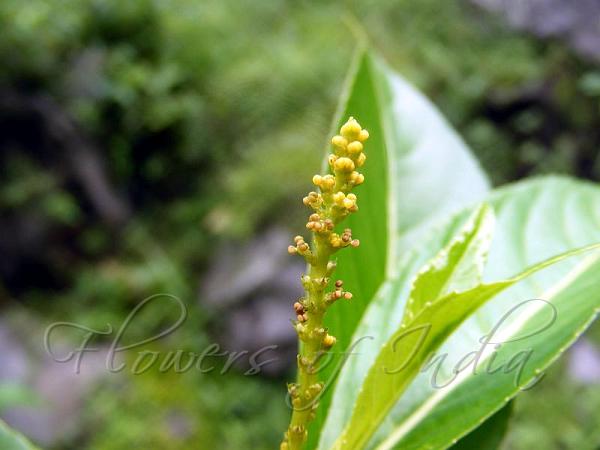|
| Himalayan Blinding Tree |
|

|

| File size | 78244 |
| Original date | 1/8/12 1:58 AM |
| Resolution | 800 x 600 |
| Flash | Flash did not fire, auto |
| Focal length | 6.3mm |
| Exposure time | 1/139s |
| Aperture | 4.0 |
| Focus Distance | 0.0m |
| Metering Mode | Multi-segment |
| Camera make | FUJIFILM |
| Camera model | FinePix S5700 S700 |
| Sensor type | OneChipColorArea |
|
|
|
|
Photo: |
Botanical name: Excoecaria acerifolia Family: Euphorbiaceae (Castor family)
Synonyms: Excoecaria himalayensis, Excoecaria acerifolia var. himalayensis
Synonyms: Excoecaria himalayensis, Excoecaria acerifolia var. himalayensis
Himalayan Blinding Treeis a shrub 1-3 m tall,
hairless; branchlets longitudinally angulate, sparsely warty. The genus
name Excoecaria is from the Latin word excaeco, which
means "to blind" and refers to the sap of some plants of this genus
that can cause temporary blindness. Leaves are alternately arranged,
leaf-stalks 2-5 mm, leaf blade ovate, ovate-lanceshaped, or
lanceshaped, rarely elliptic, 5-13 x 0.8-6 cm, papery, base narrowed,
sometimes blunt, margins densely pointedly glandular-sawtoothed, tip
tapering or long tapering, lateral veins 6-10. Flowers are unisexual,
borne in 2.5-6 cm racemes at branch-ends and in leaf-axils, female in
lower part, male in upper part. Flowers are very small with with 3
sepals, borne with small bracts. Capsules are nearly
spherical-triangular, about 1 cm in diameter. Seeds are ovoid,
gray-black when dry, smooth, about 4 mm in diameter. Himalayan Blinding
Tree is found in Himalayas, from Kumaun to Nepal, Assam, at altitudes
of 1100-3000 m.
| Identification credit: Nidhan Singh | Photographed on Govindghat-Ghanghria trail, Uttarakhand. |
• Is this flower misidentified? If yes,